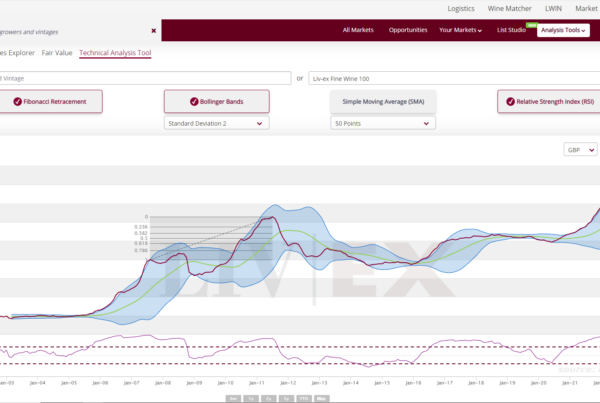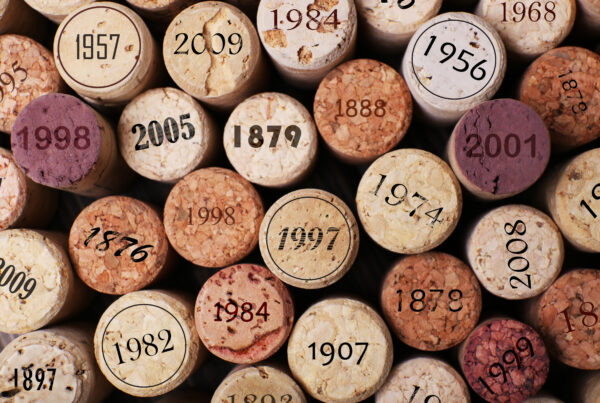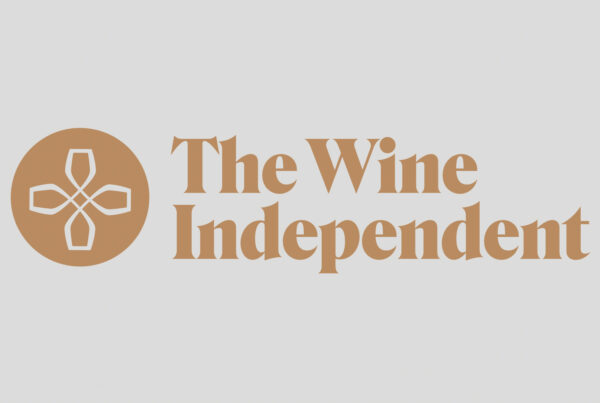Back in December, Liv-ex was named one of the UK's fastest growing companies in the 2009 edition of the Sunday Times Virgin Fast Track 100. The company behind the list, Fast Track, recently held an entrepreneurs' dinner at which Liv-ex Director James Miles was asked to give a speech. We have reproduced it below.
The Liv-ex Story
Liv-ex was conceived 10 years ago this week as a dotcom. The idea was to build an online stock exchange for wine. As far as my business partner, Justin Gibbs, and I were concerned, our B2B platform for wine merchants was a no brainer. We were going to launch, merchants would flock to sign up and within a few years we would sell up and head for the beach!
Fast Track wanted me to talk a little bit about how we have coped during the recession. The truth is that the last few years have been comparatively benign for Liv-ex. Our sales in 2009 were down 8% on 2008 but sales and profits were still sharply higher than 2007. Moreover, transactions and membership numbers continued to grow at a 30% clip last year. Nevertheless, we did learn some invaluable lessons in our early years. These have certainly helped us overcome recent challenges.
Our “Great Recession” began within weeks of starting Liv-ex. On 10th March 2000 the Nasdaq peaked and then proceeded to fall 78%. Basically we had absolutely nailed the top of the market. It didn’t take long for the reality of our predicament to sink in:
a) We knew very little about wine and even less about the market.
b) At least 12 other companies were trying to do a something similar to us.
c) In the world before broadband the internet wasn’t fit for purpose. It was just too slow to support a trading exchange.
d) Our potential customers were in no hurry to sign up with us or any other dot com.
e) And our model – which didn't involve taking over the world – was of no interest to venture capitalists either.
In short, the beach had disappeared over the horizon!
Looking back now the only thing that kept us going was belief. We were confident that our idea was good and our model was right.
We had traded a small amount of wine, and the closer we looked, the more intrigued we became in the market. Unlike supermarket wines, the great wines of the world (mostly from Bordeaux) take 10 years or more to mature and can often last 50 years. As such there were plenty of opportunities to trade these wines and the supply chain was long and fragmented.
What is more, merchants and wealthy individuals had been speculating in this commodity for hundreds of years, so the trading culture and much of the infrastructure was well entrenched. Nevertheless, it was incredibly opaque. Finding the actual market price was virtually impossible for all but a few insiders. High dealing costs pointed to low liquidity and other inefficiencies. Indeed, the global market was then worth about USD1bn per year.
Both Justin and I were stockbrokers. For us it seemed obvious that an exchange was the answer. It would add value to all of the market's participants by introducing a set of common standards to pricing, trading and settlement. This in turn would bring down costs, increase transparency and precipitate confidence, participation and growth. In addition, we believed strongly that our exchange had to be based around the middleman. Middlemen play a vital role, providing capital, expertise and their time to both customers and suppliers. This was the way exchanges worked in the City, but it was not what excited people at the time. The dotcom boom was all about disintermediation: bricks and mortar were doomed.
This seemed nonsensical. For us, the dot com opportunity was not about disintermediation. It was about a collapse in the cost of distribution. An exchange is not in the business of stocks, commodities or derivatives (that is the business of the exchange's customers). An exchange is an information business. To distribute information, you need a network. The Internet had the potential to cut the cost of distribution to virtually zero. It made an exchange viable for even a niche market like wine. This was our Eureka moment.
As such we kept the faith. We believed the stock exchange model was correct. We set Liv-ex up as a club of merchants. We would charge members a subscription fee and bill commissions when we matched transactions. In addition, we would collect data from our customers and publish it on line. We have never deviated from this path.
At the start, the Internet was painfully slow. Most of our customers had dial ups and frankly it was more efficient to send an email or use the phone. As such, although conceived as a dotcom, we built our business as a telephone exchange. We were the only people with the patience to use our website.
By day we would call our members to find out what they wanted to buy and sell and tried to match this business over the phone. Once deals were agreed, we put the orders through the website ourselves. By night we would collect data from our merchants, enter it into a database and try to identify trading opportunities for the next day.
Another challenge we faced was convincing our potential members that signing up to Liv-ex was in their interest. First, however good an idea Liv-ex was, with no one signed up, the system was of little value to anybody. Second, many wanted to know why, after a life time of doing business successfully, they needed us. Third, there were concerns transparency would impact upon margins.
There were no simple answers to these questions. We effectively deferred answering them and offered our service for free for the first six months. After all, if our service was worth nothing with no one signed up, we could hardly charge for it. Thankfully, there was sufficient curiosity to persuade 10 merchants to sign up and in July 2000 we launched the service.
Our priority was to build the network of users. The bigger our network became, the more useful our service would be to both existing and potential users and the more trade we would do. This would be a powerful virtuous cycle, but not an easy one to get going. We spent our day calling merchants, setting up appointments and trying to do deals. As our potential customers were all over the world, we also travelled extensively, staying in cheap hotels and grabbing the cheapest flights we could.
As the dotcom bubble started to unravel, many of the dynamics conspiring against us in the early days started to work for us. For a start, the competition was blown out of the water. As most of the professional investors felt our idea was too niche and not disruptive enough, Liv-ex was entirely self funded in the first year. While we furnished our office, a box room above a pizza kitchen in South London, with other people’s cast offs, our main rival had 30 staff in Mayfair. On one occasion, in order to woo a potential customer, the founders flew to New York on Concorde for lunch. They then opened offices in Sydney and Singapore. Unsurprisingly, their business eventually failed with £10m of losses.
We funded the business initially with generous redundancy cheques from our former employer. When this money started to run dry, we managed to raise a small amount of money from angels in December 2000. Our Chairman urged us to write regularly to our outside shareholders. We have written every quarter since.
This proved to be one of the best tips we have ever been given. It created an enormous amount of goodwill. It not only helped us to top up our funding in 2002 – a desperate time for dotcoms – but also to do so at a higher price than in 2000. Our angels, all successful in their own right, have also been a vital sounding board and source of advice and contacts. Three of them now sit on our board.
Providing you have some money in the bank, recessions are undoubtedly the best time to be building a business. Good people become available at sensible prices, suppliers are keen to do deals and potential customers become much more receptive to new ideas. It is also amazing how, when adversity strikes, the creative juices get going and any fear of failure just washes away. The massive over investment in software and hardware during the boom also precipitated huge over capacity for all things Internet related. This drove down costs, which ironically, made the Internet a viable platform for our exchange. Today more than 60% of our trade is done by our members themselves, directly on the web.
Apart from growing our network of users, we also realised that we had to find additional ways of adding value. Initially our platform was very simple. Liv-ex was set up as a club of merchants. There was a club committee, which vetted new members and set the club rules. The rules governed stock condition, payment and delivery terms, but trades were only anonymous up until the point of trade. At the end of the day, counterparties were introduced to each other and settled directly between themselves. This put in place a standard set of black and white trading rules where previously there had only been grey.
This simple system was low cost and low risk. It allowed us to develop relationships and build trust with our members. It also bought us time to learn the business, but it had a fatal flaw. Our customers quickly learnt how to circumvent us and avoid paying the fees. In addition, we realised that we were missing a trick. Our members placed a lot of value on anonymity and some didn’t want to sign up without it. As such in October 2002, we launched a new platform, where Liv-ex settled the trade too. It was at this point that we started to gain traction and the business started to move forward.
We also set about creating a standardised set of wine names and a methodology for displaying the data. Every merchant has a different naming convention for their wines and a different way of displaying their offers. Our new naming and display conventions made it easy for us to compare one merchant's offer against another’s and also to run value-added queries on our database. This, for example, made it possible to draw charts, track volumes and aggregate data to create indices.
In 2004, we launched the Liv-ex 100 Fine Wine Index, more for fun than anything else, and were taken aback by the response. Within 18 months the likes of Reuters and the FT were describing it as the “wine industry’s leading benchmark”. Then Bloomberg listed it on their terminals. People sometimes assume that we have a huge marketing budget, but the reality is that most of our PR is internally generated. We discovered that there was just a huge appetite amongst the media for fine wine data and our indices filled this gap. PR has remained the bedrock of our marketing strategy ever since.
We initially thought we would make money on the data side from selling it to private collectors, but actually our merchant’s found it much more valuable. They use it to value both their own and their customers’ stocks. Wine funds, which arrived on the scene in 2003, also need our data to mark their portfolios to market. Data now accounts for 25% of our income.
Our data and indices also allowed the investment community to compare fine wine to other assets. They found that the results stacked up rather well. Fine wine has produced an average compound return of 13% over the last 20 years, beating most other asset classes. This has had the effect of attracting a lot of new money into the market, not just from traditional markets like US and UK, but also from new markets like China and Russia. Undoubtedly this has contributed to a trebling of the market to USD3bn in the last five years.
The last area where we are trying to add value is in the supply chain. The logistics infrastructure has been designed to handle high volume, fast moving everyday drinking wines. Fine wine, which takes 10-20 years to mature and can cost up to £50k per case, sits uncomfortably within this environment. Every transaction requires the physical movement of goods, when ideally fine wine should remain in a cool damp place until it is ready for drinking. As such, in 2007 we bought a small warehouse services and logistics business – Vine International. It is early days, but by applying standards we hope to find ways to add value and efficiencies in this area of the business too.
As such, the lessons we learnt in the early years have certainly helped us recently. They instilled in us some important disciplines, like keeping costs low, our shareholders close, and to constantly add value for our customers. But it also reinforced the power of our convictions and taught us that not everything about recessions was necessarily detrimental to the business.
The exchange currently has 277 members in 25 countries. Combined they account for about 80% of global turnover in fine wine. We offer transparency, liquidity and anonymity, and the exchange is also the lowest cost route to market in the industry. It provides members with global distribution, coupled with considerable convenience and back office efficiency. Liv-ex members can deal with hundreds of counterparties through just one account.
Nevertheless, with less than 2% market share, and a data and settlement business still in its infancy, we still harbour ambitions for substantial growth.
The beach, unfortunately, remains as elusive as ever!





